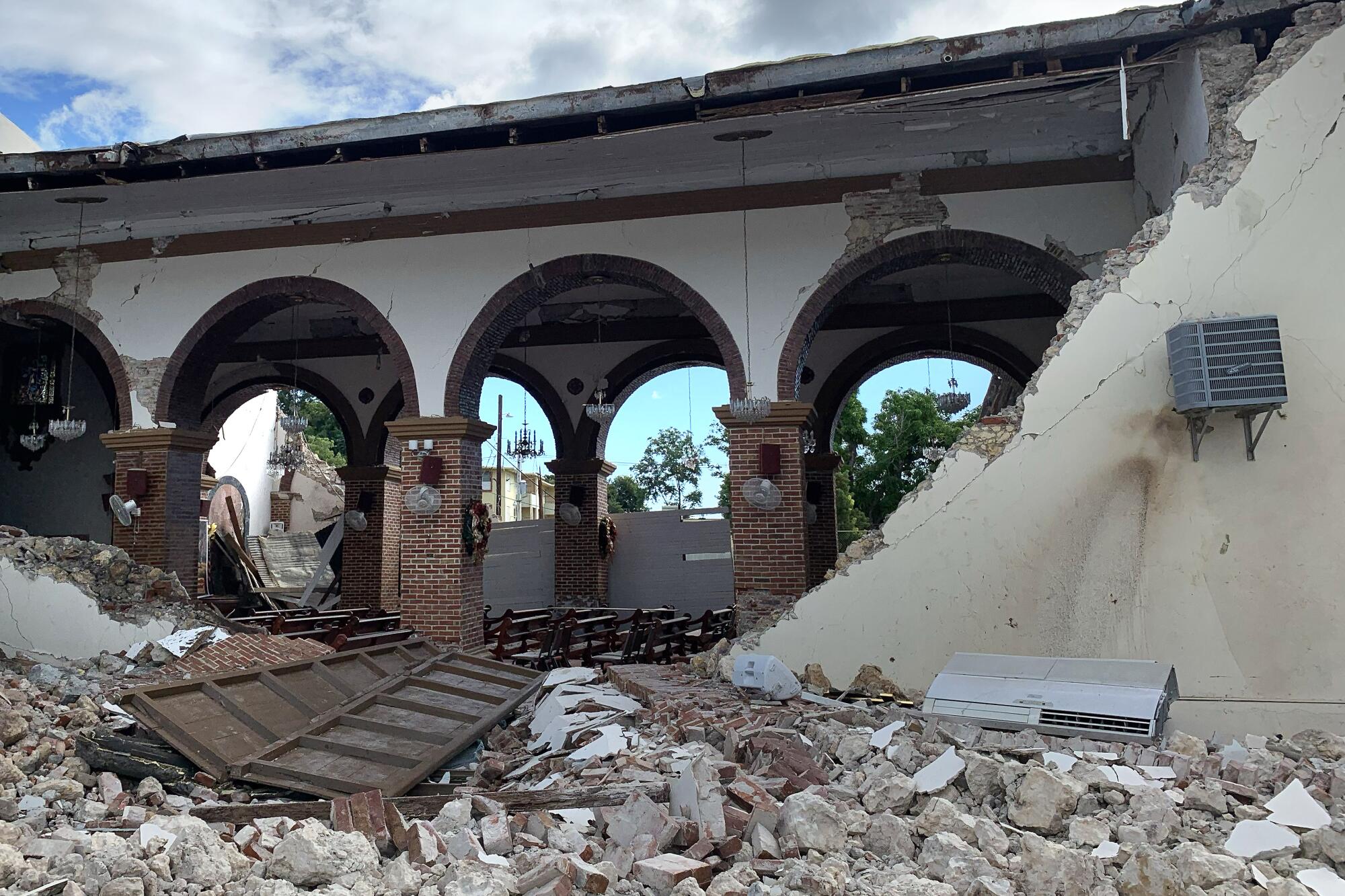
- Share via
GUAYANILLA, Puerto Rico — The quake-shaken family set up camp outside their home along the southern coast of Puerto Rico with no intention of going back inside anytime soon despite the muggy weather and occasional downpour.
A canopy shielded Marianela González Cintrón, who is battling pelvic cancer, from the relentless sun as she lay in a lawn chair under a blanket near a cluster of tents.
Her family had opted for the outdoors after a magnitude 6.4 earthquake, the strongest to hit the Caribbean island in more than a century, this week frightened them into thinking they would not escape if another temblor struck.
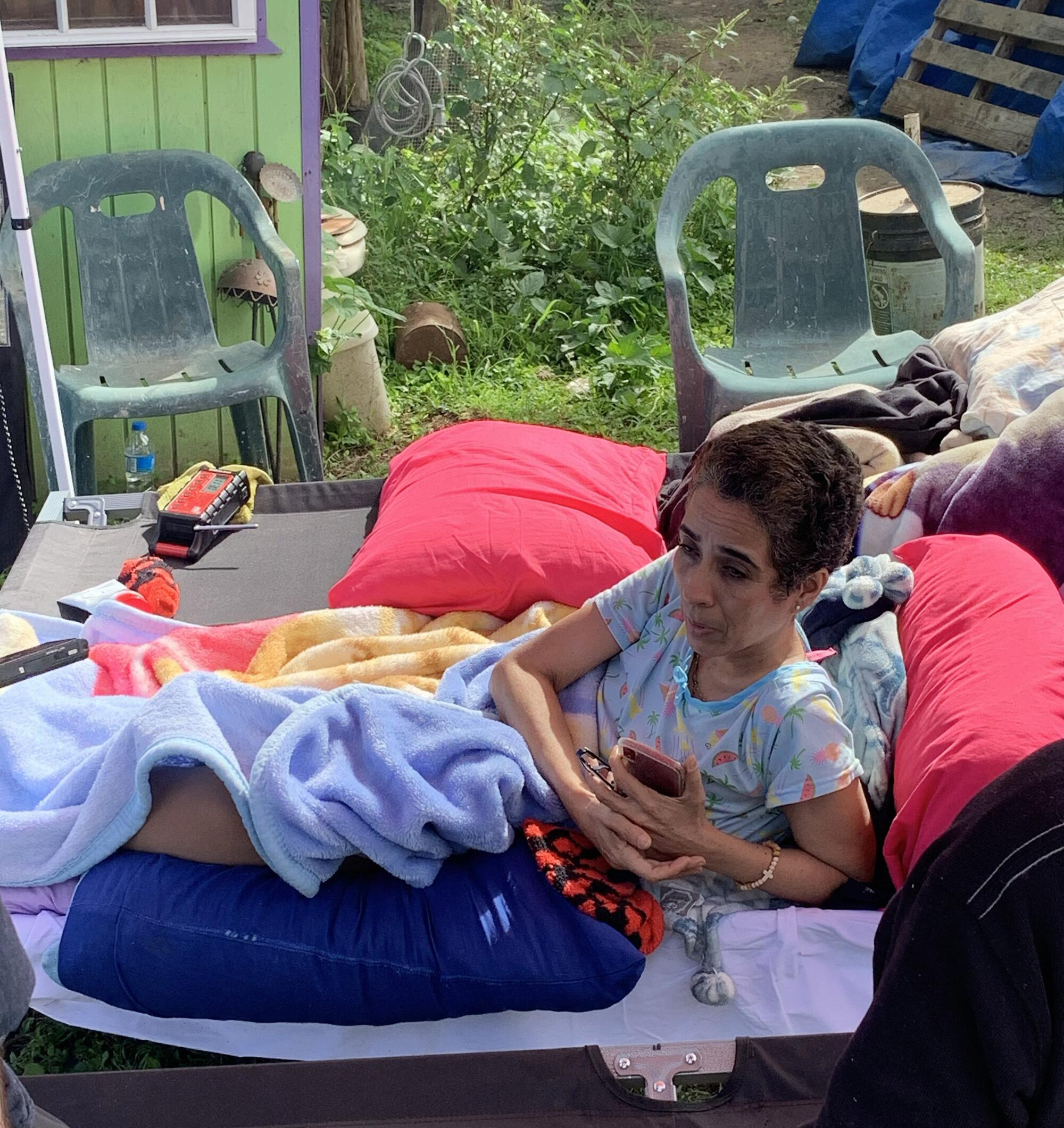
“The house was dancing,” said Doris Cintrón, González Cintrón’s mother.
Such natural disasters, extended power outages and political upheaval, cresting with peaceful protests against the government that resulted in Gov. Ricardo Rosselló’s resignation in July, have hit Puerto Rico particularly hard and in rapid succession.
The earthquake Tuesday, one in a series of hundreds of seismic events that have jolted Puerto Rico since late December, has caused the latest major obstacle faced by residents in the two years since Hurricane Maria unleashed a stream of volatility across the U.S. commonwealth. The hurricane caused thousands of related deaths, according to estimates, and left the island struggling to recover from the destruction.
Many buildings collapsed as a result of Tuesday’s temblor, which also damaged the island’s infrastructure along its southwest coast, according to officials. It caused at least one death, has again left hundreds of thousands of people without power or water and led many to seek shelter or live outside rather than return to their homes.
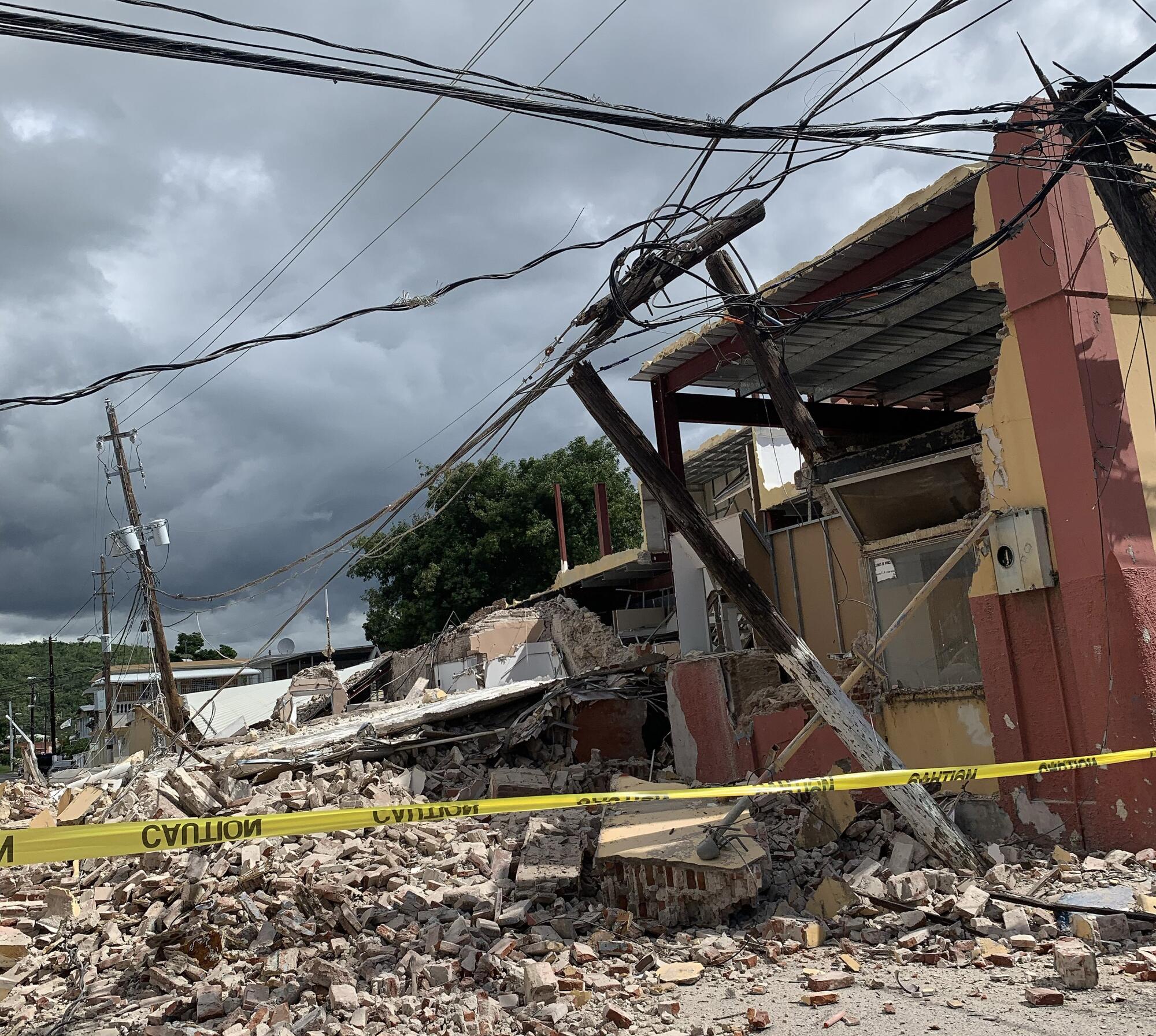
Residents of the island this week said they were anxious but grateful that the recent quakes and aftershocks — one a magnitude 5.8 quake that toppled the Punta Ventana rock formation — had not been more severe.
The Trump administration — which was criticized by many Puerto Ricans for what they considered a slow, inadequate response to the devastation caused by Hurricane Maria in 2017 — on Wednesday approved Puerto Rico’s request for a federal disaster declaration. On Thursday, a public health emergency was declared as another round of anxiety occurred for the island population of about 3 million U.S. citizens largely unfamiliar with quakes.
The last prominent earthquake in Puerto Rico, on the border of two tectonic plates, occurred in 1918. Concentrated 30 miles off the northwestern coast, the tremor and subsequent tsunami killed 116 people. This time, most of the effects were concentrated in the southwest region of the island, leaving behind scenes reminiscent of Maria’s aftermath.
The lack of streetlights spawned slow-moving chaos down Highway 127, Guayanilla’s main road. Lines of cars waiting at gas stations had spilled out into the street until the stations went empty Wednesday.
Supermarket parking lots were flooded with people waiting to buy food, though they had no power or water at home. Guayanilla resident Hector Rivera Figueroa, 62, said he waited in line Tuesday at a bakery for an hour to order bread. He returned two hours later to retrieve it.
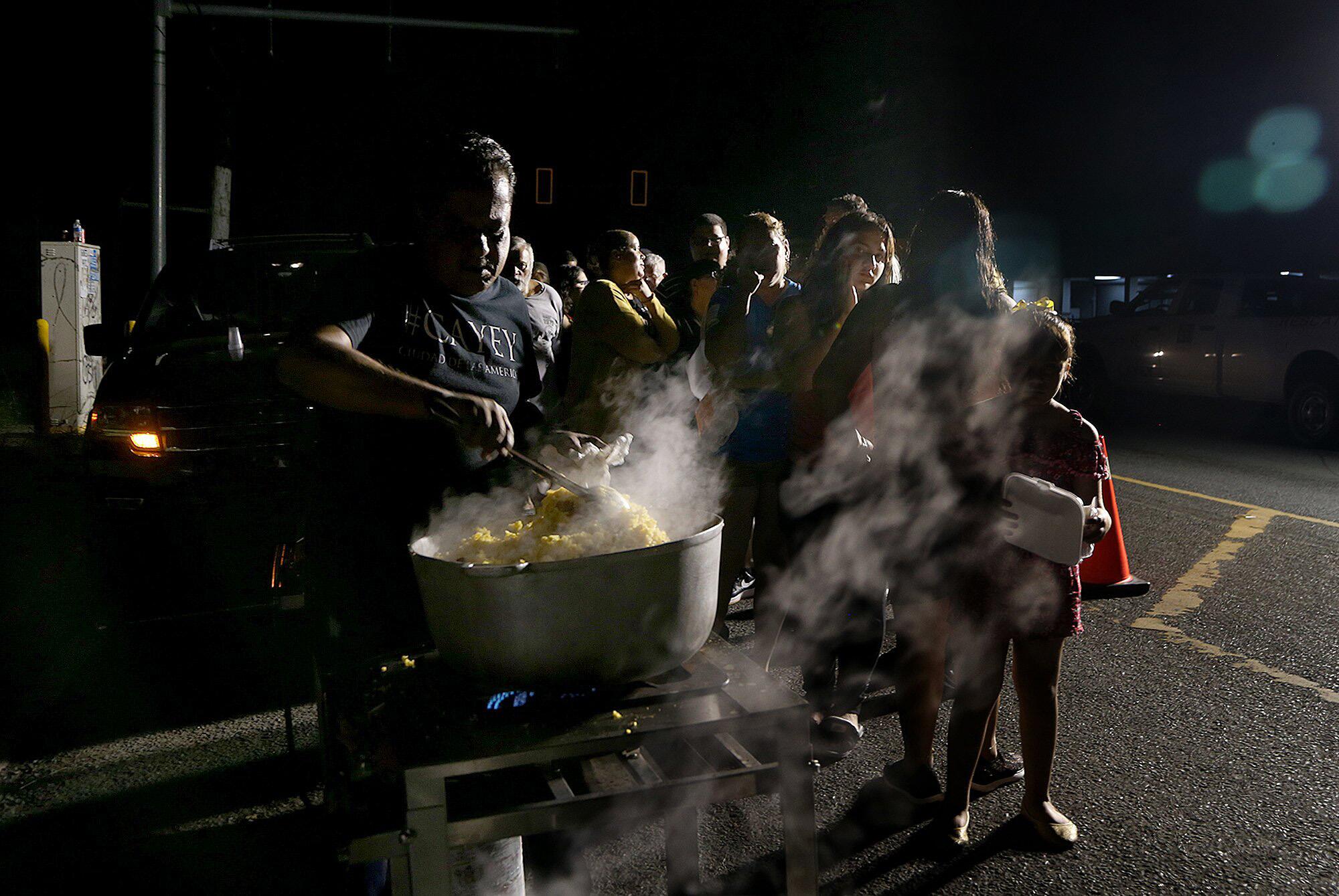
Power had returned to parts of the island by late in the week, but two-thirds of the population remained without electricity on the fragile grid while hundreds of thousands of residents still had no water. Guayanilla’s Costa Sur Power Plant, which produces over a quarter of Puerto Rico’s electricity, was severely damaged.
Hundreds of people in Guánica, the municipality hit hardest, slept at the Mario “Tito” Rodríguez Coliseum on Wednesday night. More than 1,000 people bunked at various shelters in Ponce, the island’s second-biggest city. Cars lined Mario “Ñato” Ramírez Torres Municipal Stadium, where families gathered in Yauco. The chef and philanthropist Jose Andres was stationed there to help feed people.
In Guayanilla, 200 homes, many built on stilts, were damaged and 47 completely collapsed, according to Glidden Lopez, the town’s spokesman.
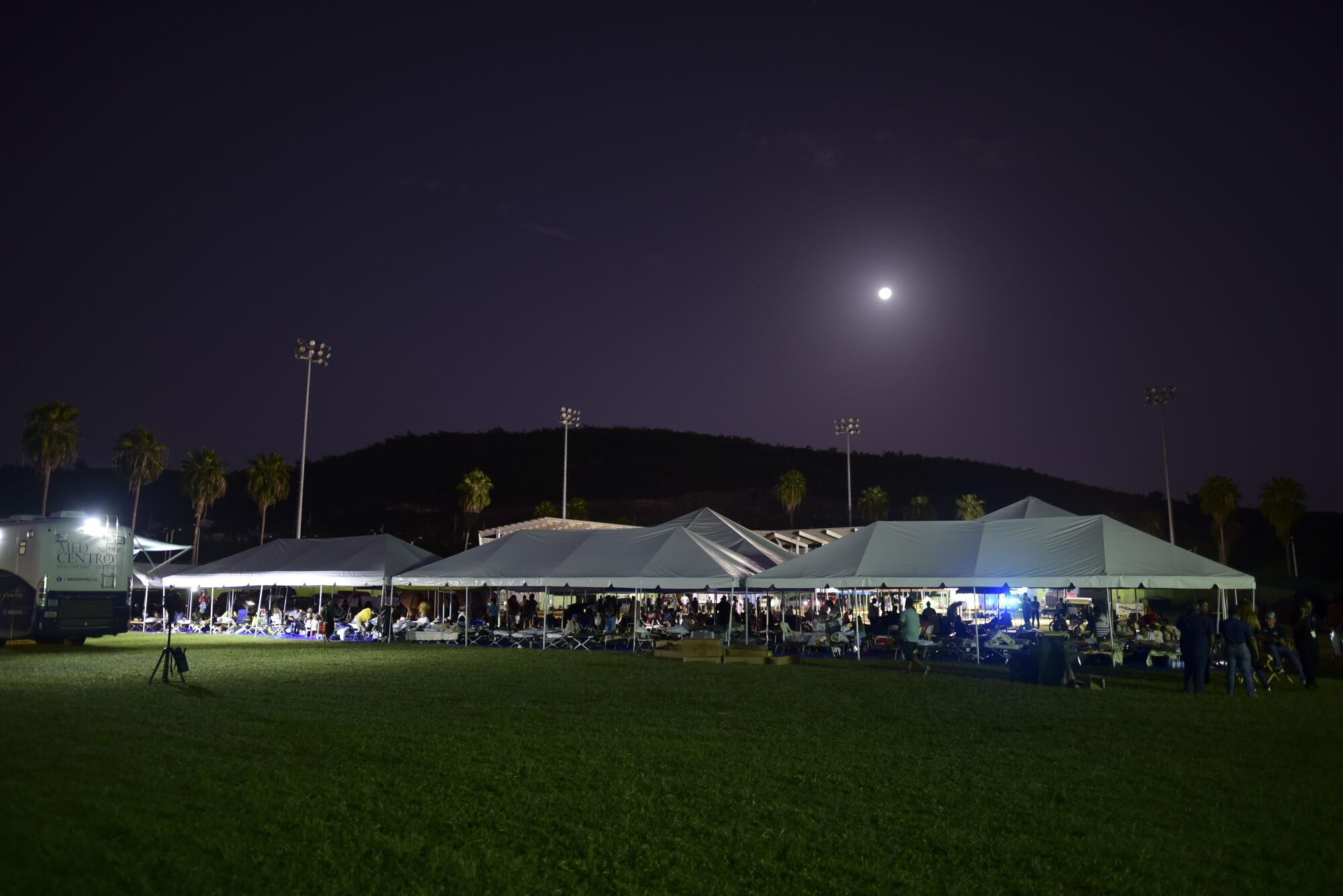
Hundreds of people have stayed at makeshift shelters at a school and a baseball stadium overnight. Guayanilla Mayor Nelson Torres Yordán was among them Wednesday. He had borrowed tents from another municipality because the company he usually rents from experienced a building collapse.
“The reality is that it’s going to be very difficult to begin utilizing most of the buildings in town,” Lopez said. “We’re practically talking about a municipality that has to be reconstructed.”
Classes were scheduled to resume Monday but dozens of schools in the region were not expected to be ready. On Tuesday, Education Secretary Eligio Hernández reportedly said that up to 95% of Puerto Rico’s public schools were not constructed to current earthquake codes.
Maribela Lugo Garcia has been the director of Guayanilla’s school band for 17 years. They have performed at the Rose Parade four times, last appearing a year ago after rebounding from Maria and the two months with no classes that followed.
She fears another extended absence is ahead. Many of her supplies, including the band’s uniforms and instruments, are stuck in her class in the school’s second floor, which remains inaccessible.
“We need to figure out how to get everything out of there,” Lugo Garcia said. “That’s going to take some time.”
Maritza González Cintrón, president of a local environmental organization, had been distributing resources to residents since Monday while maintaining communication with people around the island to coordinate help. The goal was to ensure that necessities, especially water, reached those in need — a widespread problem after Hurricane Maria.
“People don’t pay attention to these necessities,” said González Cintrón, “including our government, which doesn’t give the proper attention to what we’re going to drink.”
A few minutes up the street, González Cintrón’s sister, Marianela, had her husband, Cecilio Acosta González, by her side.
Acosta González retired from the Army in 2017 after 24 years and worked in emergency management for 15 years. He had trained for natural disasters, including earthquakes, and experienced Maria at home, where waist-high water flowed through Guayanilla’s streets. They have a plan if another strong earthquake hits — scramble to the nearby hills for high ground to avoid the worst of a possible tsunami — but all the preparation did not quell the fear stoked when a tsunami alarm sounded Tuesday morning.
“With a hurricane, you know it’s coming,” Acosta González said. “They tell you where it’s going to pass through, what you should have, the wind’s strength. But nobody knows what is going to happen with this.”
At La Parroquia Inmaculada Concepción church, which was constructed in 1841, Father Melvin Díaz stood among the rubble left after the magnitude 5.8 temblor Monday. He hugged those who showed up to see what had happened to the church.
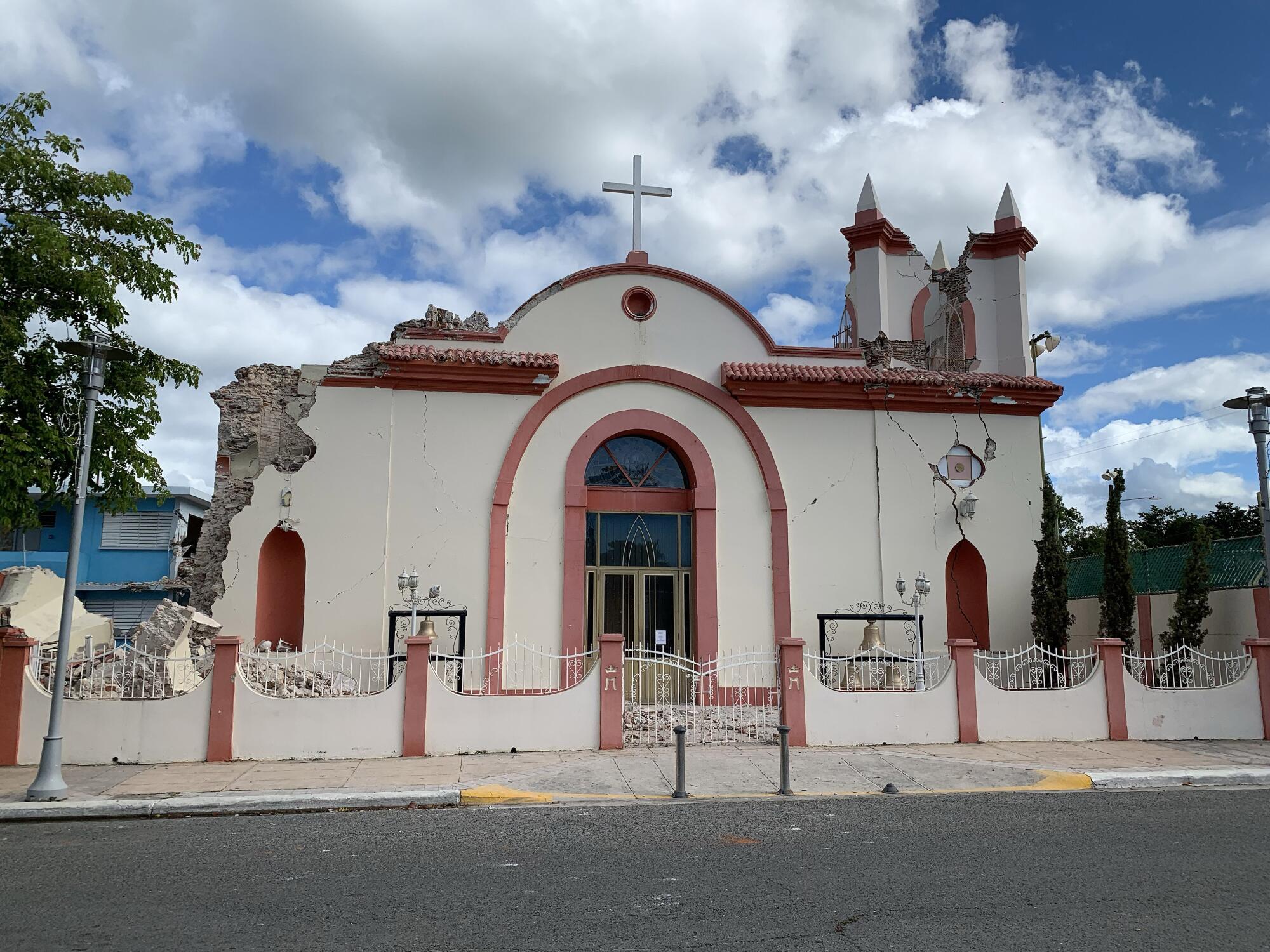
“It’s shocking to see this,” said Díaz, the parish priest. “But these people have the desire and will to work together to get through this.”
A half-hour away, past a rock slide that had shut down a lane on Highway 2 along the Caribbean Sea, Marta Martínez Morales was home in Ponce spending her Wednesday brewing coffee and cooking food for others.
The 68-year-old retired schoolteacher and Army National Guard sergeant hadn’t slept for two nights. She spent them in her covered patio outside her kitchen fully dressed with the radio on, listening for any updates knowing social media couldn’t be trusted.
Her neighbors slept outside their houses or in their cars. She said many were panicked and most didn’t have much faith in elected officials. They were just hoping the worst was behind them.
“Emotionally, we’re very fragile,” Martínez Morales said.
More to Read
Sign up for Essential California
The most important California stories and recommendations in your inbox every morning.
You may occasionally receive promotional content from the Los Angeles Times.








